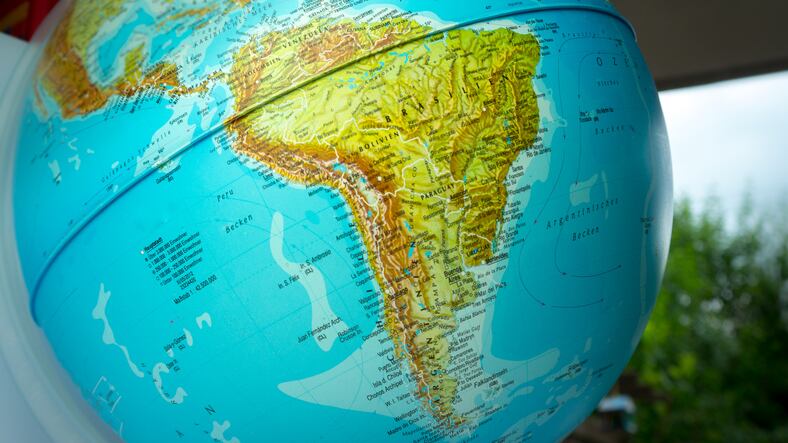Speaking to FoodNavigator-LATAM, CEO of About Marketing Solutions Terry Soto – a specialist in Hispanics and Latin America marketing - said the past decade had seen plenty of American brands moving into various Latin American markets, although rarely with instant success.
European or non-American multinationals, like Nestlé, Soto said, had plenty of experience operating across borders and had a very “sophisticated approach” with on-the-ground management, offices and dedicated time for research.
American firms, however, had “a little bit of a tougher time” for several reasons, she said.
“Most of it is that companies tend to be a bit more America-centric; they intellectually understand and acknowledge things are not the same in other countries but they tend to go with the same strategy as they do in the US anyway, which often does not work. So, there's a lot of trial and error as a result.”
The 'aspirational' brand
Soto said every part of a LATAM marketing strategy had to revolve around the consumer and the very different ideals that influenced brand choice.
“Everyone, including America, has a 'keep up with the Jones'' mentality. But in Latin America, this sort of ideal is even stronger,” she said.
“...It's really about appearances. Everyone wants to appear as if they're of a higher class than they really are. People are very concerned about how they're perceived by neighbors, friends and family and so this is reflected in the brand choices they make, especially if those brands are going to be visible to friends and family.”

For example, products that could be gifted or shared carried particular weight in the market, she said.
“If you're going to be putting a bowl of chocolates on the coffee table for friends coming over, it matters... Or a mom might buy Hershey's chocolate syrup for her kids because she can afford it and their friends might come over and see that.”
These types of brands, she said, were deemed aspirational among Latin American consumers and, in most cases, were seldom a national brand but an imported brand.
So, for American brands moving in was it just about giving the product a luxury makeover? Not necessarily, Soto said, as much of the appeal could be achieved through marketing.
“The brand needs to recognize this emotional need state and in some cases it can be there even if it's subliminal – how your commercial looks and feels; what the people look like; what their home looks like; the impression a consumer gets from the commercial. In Latin America, it's always upscale, even when you're targeting the masses.”
“...To understand [this consumer] dynamic is very important because it's very much about the psyche they have and employ when making choices about a brand and why they might choose an American brand instead of another, even when they can't afford it,” she said.
Adapting to be affordable
Affordability, Soto said, was another key concept to consider, especially for long-term market traction.
“Understand that the consumer profile in LATAM for American brands, by necessity, is going to be more affluent and therefore much smaller in size; you've got a smaller segment that's going to be able to afford what they would consider to be premium products.”
A mass brand in the US like a Kellogg's cereal or Hershey chocolate bar, for example, was considered 'premium' in Latin America, she said. This, she explained, created several important considerations for a company - where to distribute; what pricing strategy to follow; what SKU and packaging to use; and what product positioning would work best.
Companies could consider specialty SKUs, she said, like how Ferrero Roche had launched in Mexico with an affordable two-pack piece. This product, she said, sold in Mom & Pop stores across the country – a retail sector that held about 50% of total market volume - and therefore represented a considerable slot to get into.
“If you want to extend your product into this massive network of Mom & Pop stores and kiosks, you have to make it accessible,” Soto said, and downsizing was one way of doing so.
You can't just say 'I've got a great product'

Importantly, Soto said companies had to realize Latin America could not be targeted as a whole.
“What many companies fail to do often, is take the time to evaluate and do the due diligence on a per-country basis. Latin America is a big geography – it's not homogeneous by any means,” she said.
“...The other consideration – and this isn't often done on a very thorough basis either – is that one has to evaluate the macro forces in these countries. Are you going to run into friendly politics? Crooked politics? What is the health of the economy? What are the import tariffs going to be? And how does that bode for someone who wants to be competitive in the marketplace? What about currency fluctuations – how steady is that?”
Knowing and keeping track of all of this, she said, was vital for an international company wishing to succeed in any LATAM market.
Other potential barriers like competitors and understanding how they operated in the market, as well as the overall trade environment, were equally important, Soto said.
“Everybody goes into a new market with these huge expectations of making a lot of money and it isn't until you do this due diligence that you can really analyze what these margins are. You need to go in with a very level head so you can set realistic expectations – it's not just going in and saying 'I've got a great product'.
